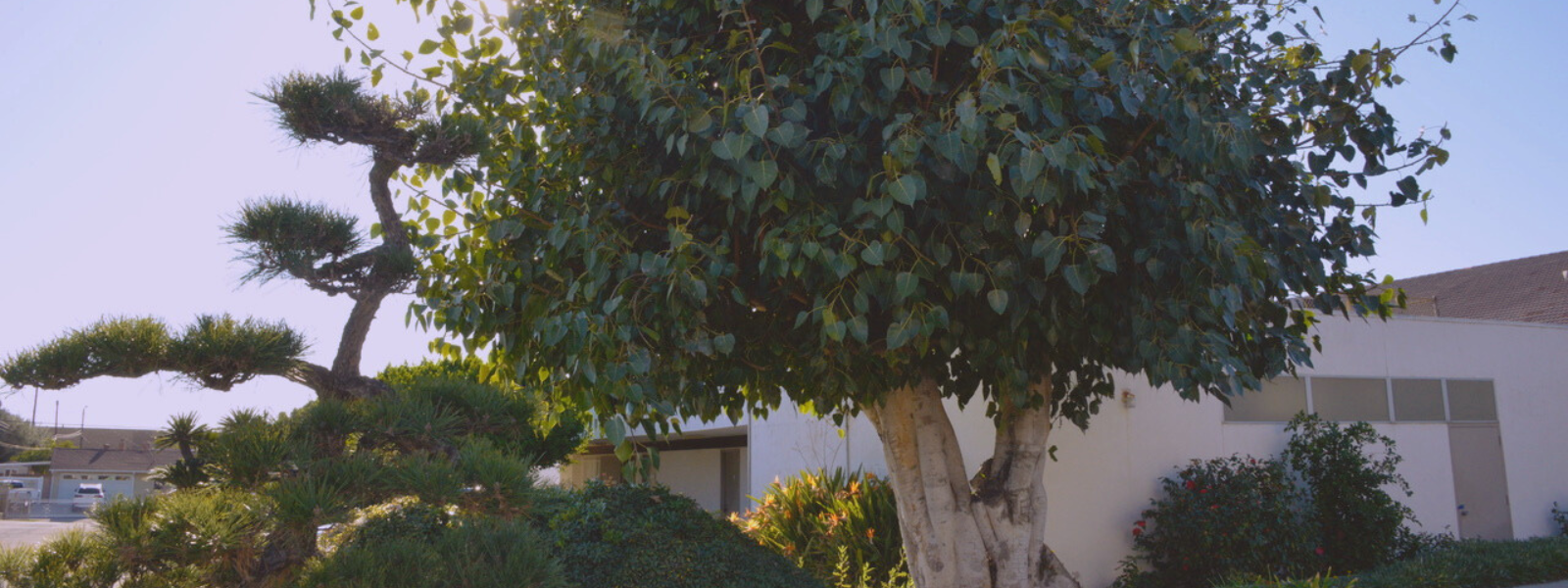Obon
Rev. William Briones, Rimban, Los Angeles Hompa Hongwanji Buddhist Temple and Supervising Minister, SFVHBT
This appeared in Nishi’s JIHO in 2003. Thank you for letting me share this with you.
I grew up less than half a mile from Mountain View Buddhist Temple. At that time what separated my house from the Temple was a field of tomatoes. It was during the warm summer evenings, as we played in the fields that I was first exposed to the season of Obon. Unbeknownst to me the colorful display of lights and the strange music would be my first memories of Obon.
It wasn’t until I started high School that I began hanging out at the Obon with some of my Japanese-American friends as well my other assorted ethnic friends. I remember we’d spend all our part-time job salary (all-$1.25/hour) on Chuck-a-luck and Nickel Pitch, eat hamburgers, beef and Chicken Teriyaki. And on Sunday evening watch the cute YBA girls dance in their colorful kimono. I had no idea why or what my Japanese-American friends and their families were celebrating.
When we think of Obon, we think of course of Bon Odori, food, games, prizes, a nice cold beer and of course a time to be with our friends and family. This is all very nice, but I think at times the true meaning of Obon has become so intertwined with “all that is Japanese.” And in all the commotion of festivities perhaps we forget or neglect the religious significance of Obon. We seem to have forgotten that unlike traditional Japanese Matsuri celebrations, Bon Odori is not an attempt to appease or petition the “gods.” Nor is Obon a time to welcome our ancestors back for a reunion with the living as so many newspapers, travel guides, magazines and websites like to report during the season of Obon.
It is this overwhelming sense of joy and gratitude that is the source for dancing during Obon. This is Obon and this is why we dance.
Simply put, Obon is a time for us to reflect upon all that continues to influence our lives and those benefits we have received from the lives of others. It is a time to express our gratitude for being given those conditions to live this life. It is an opportunity to truly reflect upon the Truth of My existence. It is with this understanding that we visit the graves of our loved ones and attend memorial services. Our visitation to the cemetery and conducting memorial services is no more than an expression of the gratitude that arises when we embrace the Truth of those causes and conditions of your life.
This is Obon … this feeling that flows though our hearts and minds. Therefore, in our Jodo Shinshu tradition, we call Obon, Kangi-e or “Gathering of Joy.” For it is an act of Joy to awaken to the truth of your life. It is this overwhelming sense of joy and gratitude that is the source for dancing during Obon. This is Obon and this is why we dance.
The fertile fields are gone now and in its place are rows of condominiums and a shopping center. Nevertheless, on a warm summer Obon evening one can still smell the chicken teriyaki being barbequed and hear the distinct sound of Japanese music crackling over the loud speakers from my mother’s house. And while I am unable to attend Mountain View’s Obon this year, I can be sure that my family will be in attendance, partaking in the festivities. And in continuing this tradition, I hope my grandson in time will cultivate an awareness of gratitude and appreciation for family, friends, community and ancestors that has made his life possible. For it is within this realization of the past with this life now, that we can pass this Truth on to future generations.

